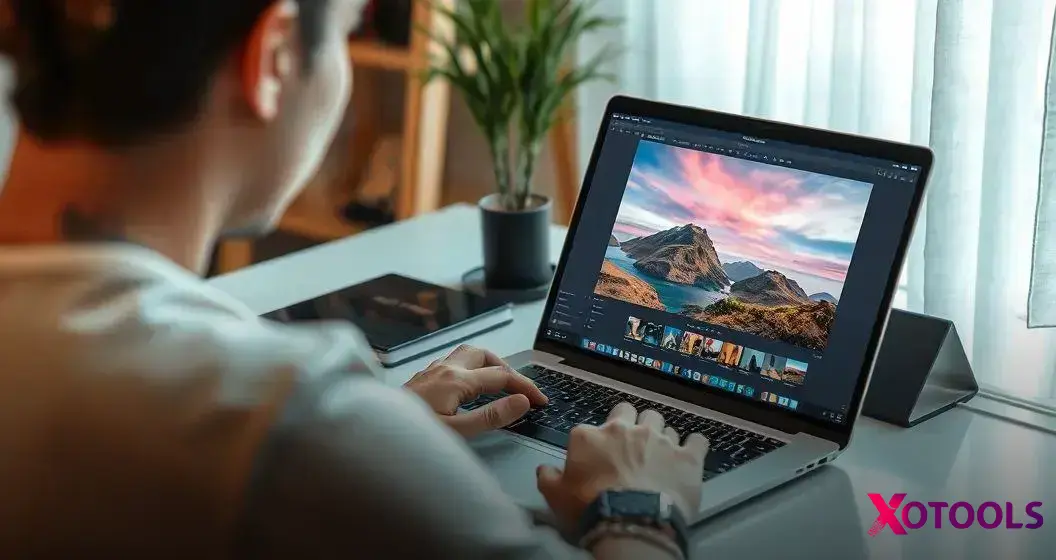ADVERTISEMENT
Photo editing is an essential skill for anyone wanting to enhance their images. With the right quick photo editing tips for beginners, you can transform ordinary photos into stunning visual stories. Simple adjustments can make a huge difference, turning your snapshots into memorable works of art.
Learning these techniques can be fun and rewarding. Even the simplest edits can drastically improve how your photos look, offering a whole new perspective on your photography. Whether you’re aiming for vibrant colors or subtle tweaks, every tip helps.
Keep reading to discover essential tips that will elevate your photo editing skills and impress your friends!
Understanding Basic Photo Editing
Understanding basic photo editing is the first step toward improving your photography skills. Photo editing makes your pictures look more beautiful and professional. Even small adjustments, like changing the brightness or cropping a photo, can make a big difference.
When you start editing, it’s important to know what tools you have at your fingertips. Most editing software includes features like filters, brightness control, and tools for cropping images. These tools help you enhance your photos with just a few clicks. Learning to use them can seem tricky at first, but with practice, it becomes easier.
Remember, editing is all about making your photos reflect your style. Experiment with different settings until you find what looks best. Each time you edit, you’ll improve your eye for detail. With these basic photo editing skills, you’ll create stunning images that tell your story.
Choosing the Right Editing Software
Choosing the right editing software is key for anyone starting out in photo editing. There are many options available, so it’s important to find one that fits your needs. Some software is free and easy to use, while others offer advanced features that may seem complicated at first. Don’t worry! Start with something simple and grow from there.
When selecting a software, think about what you need most. Are you looking to make basic adjustments like cropping and adjusting brightness? Or do you want to apply cool filters and effects? Popular programs like Adobe Photoshop and Lightroom are great for beginners, but there are also user-friendly options like Canva and Snapseed that are worth trying.
Don’t forget to check for tutorials and features before making your choice. Good software should have easy access to lessons or guides that help you learn. Take your time to test out different options until you find the one that feels right. With the right editing software, your photos will shine!
Essential Tools for Editing Photos

Having the right tools makes all the difference in photo editing. Some essential tools include brightness and contrast adjustments, cropping tools, and filters. Brightness helps you make your images lighter or darker, while contrast changes the difference between light and dark areas. These tools are easy to find on most editing software and can greatly improve your photos.
Another important tool is the sharpness adjustment. It helps to make details in your pictures clearer, especially when the image looks a bit blurry. Cropping is also an essential tool because it allows you to cut out parts of your image that you don’t want. This can help your main subject stand out better.
Lastly, color correction tools help fix any color problems in your photos. Sometimes, images can appear too warm or too cool. Adjusting the color balance will make your photos look true to life. With these essential tools, you’ll be on your way to editing like a pro!
Color Correction Techniques
Color correction techniques are crucial for making your photos look their best. One key technique is adjusting the saturation. This controls how vivid or muted the colors in your image appear. Increasing saturation can make the colors pop, while lowering it can create a more muted, soft look. Finding the right balance is important and helps your images feel more natural.
Another helpful technique is changing the white balance. Sometimes photos can look too warm (yellow) or too cool (blue). By adjusting the white balance, you can make the colors more accurate. If your photo feels off, this quick fix can really improve how it looks to the eye.
Lastly, using tone curves is a great way to adjust highlights, shadows, and mid-tones in your images. It allows for precise control over how bright or dark different areas of your photo are. With these techniques, you’ll be able to enhance the color in your photos, creating images that really stand out!
Cropping and Resizing Images
Cropping and resizing images are vital steps in photo editing that can make your pictures stand out. Cropping helps remove any unwanted parts of an image. For example, if you’re taking a picture of a friend but there’s a distracting background, cropping can help focus on your friend. This makes your subject clearer and gives your photo a more polished look.
Resizing is another important tool that changes the size of your image without losing quality. This is useful when you need a specific size for social media or prints. Always remember to keep the original file safe in case you want to go back to it later. Different platforms have different size requirements, and adjusting your image correctly can make it look great online.
Using cropping and resizing together allows you to enhance the composition of your photos. These techniques can help balance your images and make them more appealing. With just a few simple adjustments, you can transform ordinary photos into stunning visuals that people will love!
Applying Filters and Effects

Applying filters and effects is a fun way to enhance your photos and give them a unique look. Filters can change the mood of your images instantly. For example, a black-and-white filter gives a classic feel, while a vibrant color filter can add energy and excitement. Most editing software includes a variety of filters to experiment with, so don’t be afraid to try different ones until you find what suits your style best.
In addition to filters, effects can also help make your images pop. These can include options like adding a blur to the background or changing the focus. Such effects can draw attention to the main subject in your photo, helping it stand out. Just remember not to overuse effects, as they can distract from your image’s original beauty.
Always preview changes before applying them to ensure you’re happy with the results. You can adjust the strength of the filter or effect, allowing you to keep the perfect balance in your image. With filters and effects, you can transform ordinary photos into stunning visuals that express your creativity!
Enhancing Brightness and Contrast
Enhancing brightness and contrast is a key part of making your photos look better. Brightness adjusts how light or dark your image appears. If your photo looks too dim or dull, increasing the brightness can help bring it to life. However, be careful not to make it too bright, as this can wash out important details in the picture.
Contrast affects the difference between the darkest and lightest parts of your image. Increasing contrast can make colors pop and details sharper. A photo with good contrast looks richer and more engaging. To find the right balance, experiment with the contrast slider until you get a look that feels just right for your image.
Always remember to check how your changes look on different screens. What appears perfect on one device might look different on another. With practice, you will become skilled at adjusting brightness and contrast, and your photos will look professionally polished!
Retouching and Cleaning Up Photos
Retouching and cleaning up photos can take your images from good to great. This process involves removing any distractions or flaws that take away from the main subject of your photo. For instance, if there are unwanted spots or blemishes, tools like the healing brush or clone stamp can help make your photo look cleaner. These tools allow you to carefully fix little mistakes without altering the overall look of your image.
Another useful technique in retouching is adjusting sharpness. Sometimes, your photos may look a bit soft. By sharpening them, you enhance the details, making your subjects stand out more. Play with the sharpness slider gently to avoid making your photo look too harsh, which can often create unwanted noise in the image.
Finally, always zoom in to check your edits closely. It’s easy to miss small details when viewing a photo at full size. By carefully retouching your images, you’ll learn to notice and fix areas that need improvement. This attention to detail will help you develop your editing skills and create beautiful, polished photos!
Saving and Sharing Your Edits

When you finish editing your photos, the next step is saving your edits. Choosing the right file format is important. Common formats like JPEG and PNG are great for sharing online. JPEG is best for photographs, while PNG is better for images with transparent backgrounds. Always save a copy of your original image as well, just in case you want to make more changes later.
After saving your photos, sharing them with friends, family, or on social media is easy! Most editing software provides options to share directly from the app. Look for buttons that let you post your photos to platforms like Instagram, Facebook, or Twitter. Make sure you write a catchy description or hashtags to engage your audience.
Remember to check the privacy settings when you share your images. You want to control who sees your work. If you’re sharing on social media, consider setting your posts to private first, especially if you’re sharing personal images. With your edits saved and shared, you can showcase your creativity with the world!







